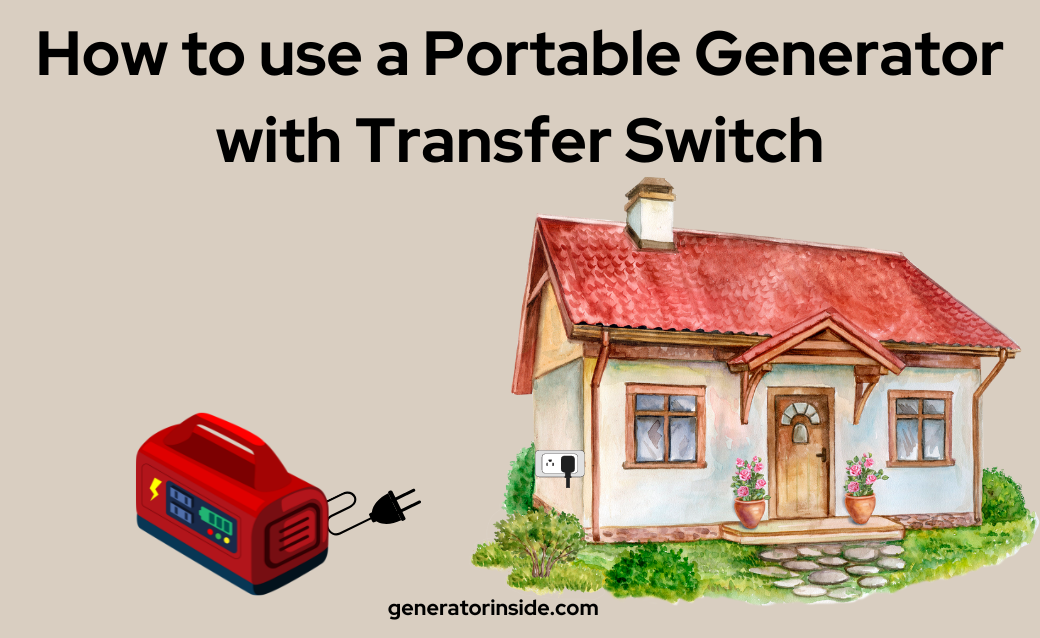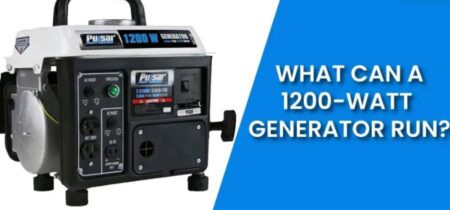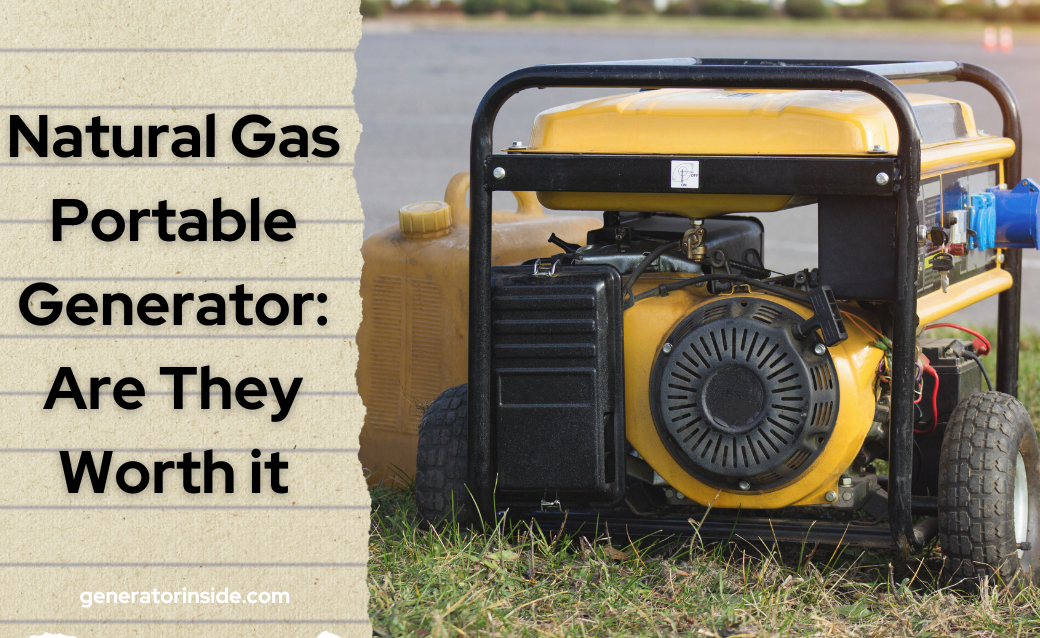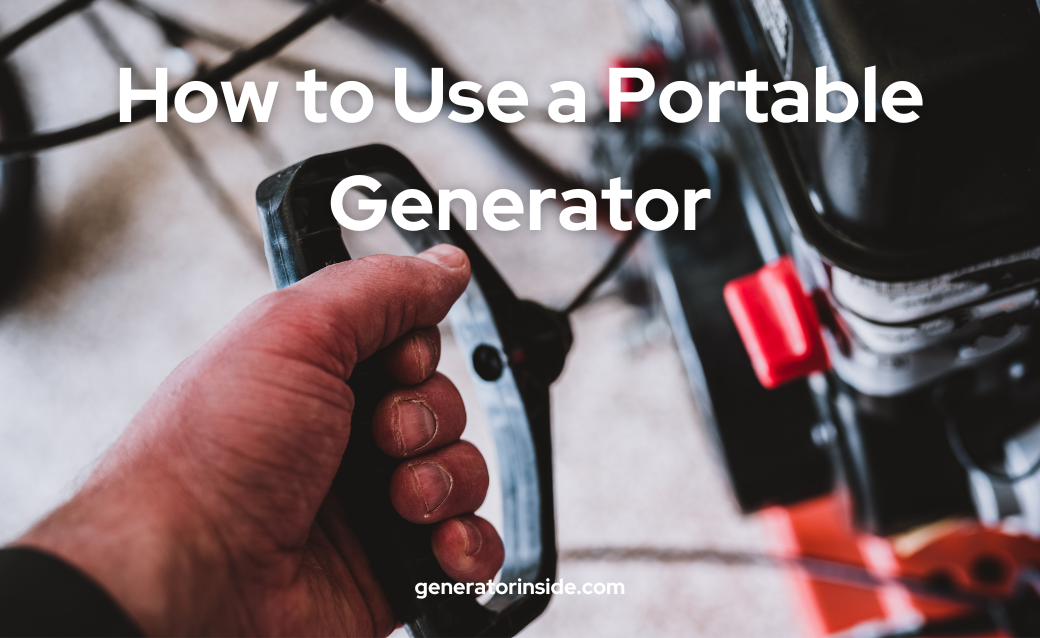
In a world where we rely heavily on electricity to power our daily lives, unexpected power outages can leave us feeling helpless and disconnected. When faced with such uncertainty, having a reliable backup power solution can provide peace of mind and keep our lives moving forward. Portable generators have become an increasingly popular choice for emergency power, but how can we integrate them seamlessly into our homes without compromising safety or convenience? Let’s enter the electrifying world of portable generators and transfer switches to answer your query.
Can you use a Portable Generator with Transfer Switch?
When it comes to integrating a portable generator into your home’s electrical system, the main thing to consider is the transfer switch. A portable generator, as the name suggests, is a mobile and easily transportable device that generates electricity during power outages or in remote areas without access to the grid. A transfer switch is an electrical tool that safely switches between your main power supply and a backup generator.
The compatibility between portable generators and transfer switches is an important aspect to explore. There are two main types of transfer switches: manual and automatic. Manual transfer switches require the user to manually flip a switch to change between utility and generator power, while automatic transfer switches detect the loss of utility power and automatically switch to generator power without any user intervention.
So Yes, you can use a transfer switch with a portable generator. Portable generators with a power rating of 5,000 watts or more can be connected to your home’s circuit breaker panel using a transfer switch. It is strongly recommended to use a transfer switch with portable generators, as it allows them to automatically turn on during power outages.
How to Connect a Portable Generator to a Transfer Switch?
Here are the exact steps you can follow to connect a portable generator with transfer switch:
- Purchase the appropriate transfer switch: Choose a transfer switch that matches the power output and voltage of your portable generator. Make sure it’s compatible with your home’s electrical system.
- Turn off the main power: Before you start the installation process, switch off the main power supply to your home to ensure safety.
- Install the transfer switch: Mount the transfer switch near your home’s main electrical panel. Follow the manufacturer’s instructions for proper installation.
- Connect the transfer switch to the main electrical panel: Remove the cover of the main electrical panel and install the appropriate breakers for the transfer switch. Then, connect the wires from the transfer switch to the breakers following the wiring diagram provided by the manufacturer.
- Wire the generator inlet box: Install an outdoor generator inlet box in a location where you can safely run your generator. Connect wires from the inlet box to the transfer switch, following the wiring diagram provided.
- Prepare the generator: Ensure your portable generator is in good working condition, with fresh fuel and oil. Check that it is placed in a well-ventilated area, away from doors, windows, and any flammable materials.
- Connect the generator to the inlet box: Use a heavy-duty outdoor-rated extension cord, called a generator power cord, to connect the portable generator to the inlet box. Make sure the cord is rated for the amperage and voltage of your generator.
- Test the system: With the main power still off, start your portable generator. Once it is running, flip the transfer switch from “Utility” to “Generator” mode. Check that the connected appliances and circuits are receiving power from the generator.
- Turn the main power back on: When you no longer need the generator, turn it off and let it cool down. Flip the transfer switch back to “Utility” mode and turn the main power supply back on.
Remember that if you are not comfortable or experienced with electrical work, it is best to hire a licensed electrician to install the transfer switch and connect your portable generator. Always follow local codes and regulations when installing and operating a generator.
Is a Transfer Switch Worth it for a Generator?
Yes, a transfer switch is a valuable addition for homes or businesses that depend on a generator for primary or backup power. It provides a secure and convenient method of connecting a generator to the main power system, eliminating the need for running extension cords throughout the building. As the purpose of a portable generator is to supply power whenever needed, a transfer switch is always a need.
When considering the addition of a transfer switch to your generator setup, it’s important to weigh the benefits and costs involved. One of the main advantages of using a transfer switch is the enhanced safety it offers. Transfer switches prevent back-feeding, which occurs when electricity flows back into the utility grid, posing a risk to utility workers and potentially causing damage to your home’s electrical system. They help protect electrical appliances by ensuring a stable power supply during the transition between utility and generator power.
In terms of convenience, transfer switches simplify the generator setup process by allowing you to power multiple circuits and appliances without the need for numerous extension cords. They also enable an easy transition between utility and generator power, reducing the downtime experienced during power outages.
However, there are some cost considerations which need to be taken into account. The initial investment in a transfer switch, along with installation costs, can be significant. But in the long run, the safety and convenience benefits may lead to savings in terms of avoiding appliance damage and reducing the need for additional extension cords.
You should be aware of legal requirements and compliance with local codes and regulations. In many areas, the use of a transfer switch is mandated by law to ensure the safe operation of generators and protect utility workers. By installing a transfer switch, you are not only enhancing the safety and convenience of your backup power solution but also complying with these regulations.
Can I Hook up an Automatic Transfer Switch to a Portable Generator?
You can hook an automatic transfer switch to a portable generator but there are a few factors to consider.
- You need to assess the compatibility between your portable generator and the automatic transfer switch. This involves evaluating the generator’s size and capacity, ensuring it can handle the power requirements of your home or business.
- Select an automatic transfer switch with ratings that match your generator’s output in terms of voltage and amperage.
- The installation process is another critical aspect to examine. You can choose between hiring a professional electrician or taking on the project yourself if you have the necessary skills and experience. Professional installation is highly recommended for safety reasons and to ensure that the setup complies with local codes and regulations.
- If you opt for a DIY installation, follow the manufacturer’s guidelines and wiring diagrams for proper configuration.
Advantages and Disadvantages of Using an Automatic Transfer Switch
When considering the use of an automatic transfer switch, it’s important to weigh both the advantages and disadvantages.
Advantages
- Convenience and Ease of Use: It automatically detects the loss of utility power and switches to generator power without any user intervention, it ensures a seamless power transition and minimizes downtime during outages.
- Automatic Power Transfer: One advantage of an automatic transfer switch is its ability to transfer the load to the generator automatically which eliminates the need for manual intervention during power outages.
- In-built Sensors for Power Fluctuation Detection: Automatic transfer switches come equipped with in-built sensors that detect fluctuations in the frequency and voltage of the main power supply, ensuring a stable and reliable backup power source.
- Seamless Backup Power Access: The seamless transition to backup power backup provides uninterrupted electricity supply without any manual effort.
Disadvantages
- Higher Initial Cost : The initial cost of an automatic transfer switch is higher than that of a manual transfer switch, making it a more significant investment upfront.
- Complex Components: Automatic transfer switches may have more complex components and systems, leading to maintenance requirements that may be more frequent or involved than those for manual transfer switches.
portable generator with Transfer switch Final Words
We’ve explored the various aspects of using portable generator with transfer switch, including compatibility, safety, and convenience factors. We’ve discussed the benefits of both manual and automatic transfer switches, as well as the importance of properly connecting and installing these devices for optimal performance and safety.
When it comes to choosing the right backup power solution, the combination of a portable generator and a transfer switch offers reliability, flexibility, and peace of mind during power outages or emergencies. By carefully considering your specific needs, budget, and local regulations, you can make an informed decision that best suits your situation.
As a final recommendation, always prioritize safety and compliance with local codes when setting up your portable generator and transfer switch system. If you’re unsure about any aspect of the installation or operation, don’t hesitate to consult with a licensed electrician or professional installer. By taking the time to understand and implement the right setup, you can enjoy the confidence and security that comes with a well-prepared backup power solution.
Also Read:
How Long Does A Portable Generator Last
How Much Gas Does A Generator Use
How long Can you Run a Portable Generator Continuously 2023?













